A major Switzerland based shipowner – Part One
Introduction

 Ships operated by the Italian born ship owner Sebastiano Tuillier had been frequent visitors to some United Kingdom ports from the 1950s to the 1970s. The funnel and houseflag colours, as shown above, were often confused by ship watchers with those of the Greek owner Tsavlaris whose colours were similar. Tuillier’s fleet, which had peaked at about 30 ships in 1971, was mainly registered under “flags of convenience” such as Panama.
Ships operated by the Italian born ship owner Sebastiano Tuillier had been frequent visitors to some United Kingdom ports from the 1950s to the 1970s. The funnel and houseflag colours, as shown above, were often confused by ship watchers with those of the Greek owner Tsavlaris whose colours were similar. Tuillier’s fleet, which had peaked at about 30 ships in 1971, was mainly registered under “flags of convenience” such as Panama.
The French ancestors of Sebastiano Tuillier (1910-82) had followed Napoleon I to Malta in 1798 and then settled in Catania, Sicily, where he was born and soon gained a keen interest in shipping. In 1933, under the name of Sebastiano Tuillier di Natale and with the help of his family, he bought his first ship, a small cargo steamer which he named ESTERINA. Built at Wallsend in 1889 as SOUTHWARK, she had been operated by James Fisher & Sons from 1920 until sold in 1926 to Catanian owners to trade as BIANCHINA. Tuillier had operated the ship as ESTERINA between 1933 and 1939, selling her before War commenced. As the Genoa based RINA CROCE she was mined in 1940. It is interesting to note that, in 1968, Tuillier had purchased the WHITE DAISY from the same owner, F.Italo Croce.
Sebastiano Tuillier had married a daughter of Giovanni Camalich, a shipowner living in Lussinpiccolo, an Adriatic port located south of Rijeka which became part of Yugoslavia in 1947 and is today the Croatian port of Mali Losinj. They had two sons, Natale, born in 1942 and named after his grandfather, and Eugénio, born in Venice in 1948, both of whom took up positions in the business and became Swiss citizens in 1977. While Natale sadly died in a car accident in Croatia in 1996, Eugénio continues an involvement in the business.
Relocation From Italy To Switzerland
Serving the Italian Navy during the Second World War, Sebastiano Tuillier was stationed at Venice and charged with organising convoys to supply troops in Albania. Perhaps for that purpose, in 1940, he purchased two elderly vessels named ESTERINA and SENIO which, although registered at Zattere 402a, Venice, were managed by his friend Ubaldo Gennari of Pescara.
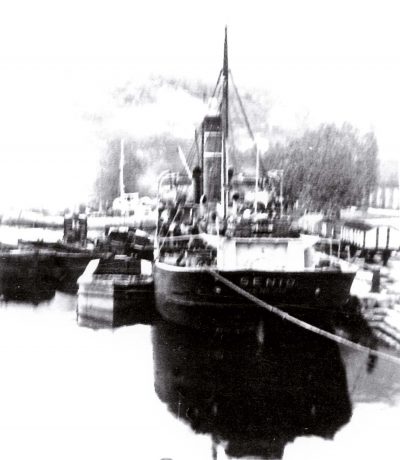
SENIO, built in 1879 as ACTIVITY for Cardiff owners, was transferred to Catanian registry in 1948 but, renamed MAESTRALE, was soon sold to Raffaele Romano of Naples and broken up at Vado Ligure in 1955.
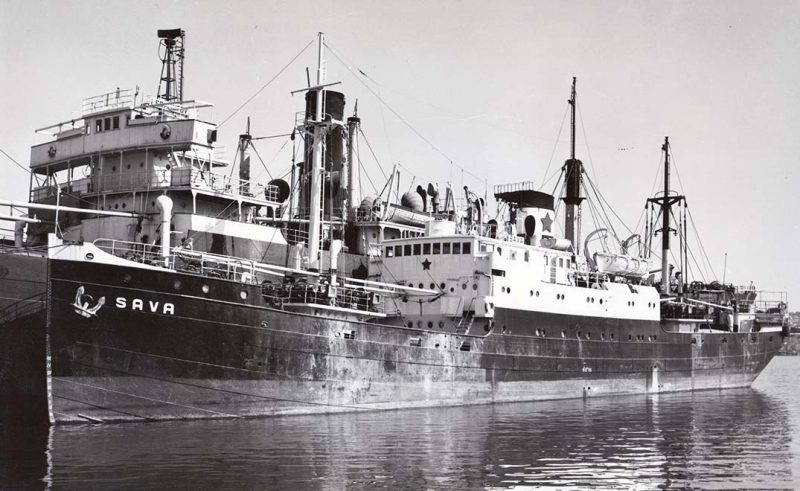
The 1900 built ESTERINA was sold in 1941 to his father-in-law and registered at Lussinpiccolo but on 8 September 1943 was seized by German forces in Dalmatia, Croatia. Damaged at Split on 6 November 1943 during an allied air attack, she was beached and eventually refloated in 1946. Towed to Rijeka for repairs, the ship was from 1952 operated as SAVA under the Yugoslav flag by Jadranska Slobodna Plovidba until arriving at Sveti Kajo, near Split, on 19th August 1966 for breaking.
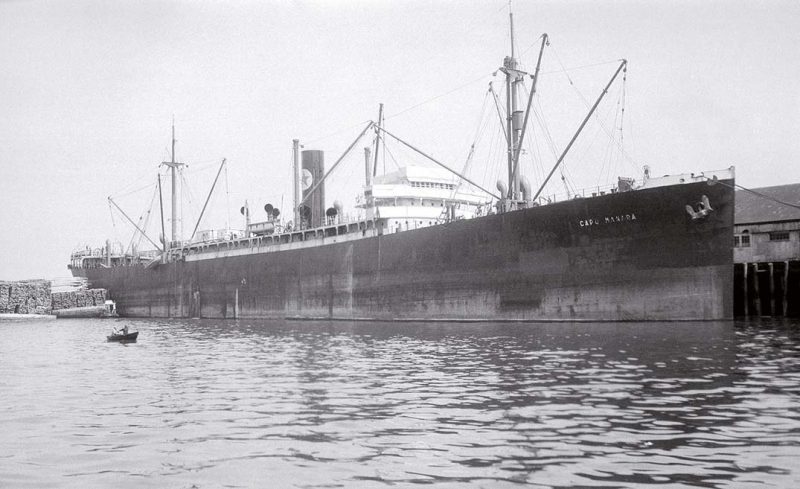
In 1948 Sebastiano Tuillier became involved in the operation of two larger vessels of 1920s vintage, named CAPO MANARA and the ESPERANZA, which were traded successfully until 1953 and 1955 respectively. It seems that CAPO MANARA, nominally owned by Cia. di Nav. “Stellamaris” S.p.A. and registered at Genoa, was jointly owned with the Italian partners Fratelli Piaggio and Angelo Ravano. Another ship operated by “Stellamaris” at that time was the GIACOMO PIAGGIO which in 1954 became Angelo Ravano’s ENRICHETTO.
ESPERANZA was nominally owned by the Panama registered Cia Naviera Audax S.A., it is thought that she was owned by Torquato Romano Gennari, a son of Ubaldo Gennari, although from 1949 she was registered at Venice in Sebastiano Tuillier’s own name. T.R. Gennari had proceeded to purchase the 1918 built former CLAN MACBEAN, traded as AUDAX between 1950 and 1959. Meanwhile, due to the unstable political situation in Italy, the joint decision was made to relocate their businesses to Switzerland. They had possibly feared that, given the situation in Yugoslavia, the Communist party in Italy would gain power and nationalise their ships.
It is believed that Sebastiano Tuillier then transferred his financial assets to Francesco Ferrazzini e C. in Lugano, a private bank with a history going back to 1927.
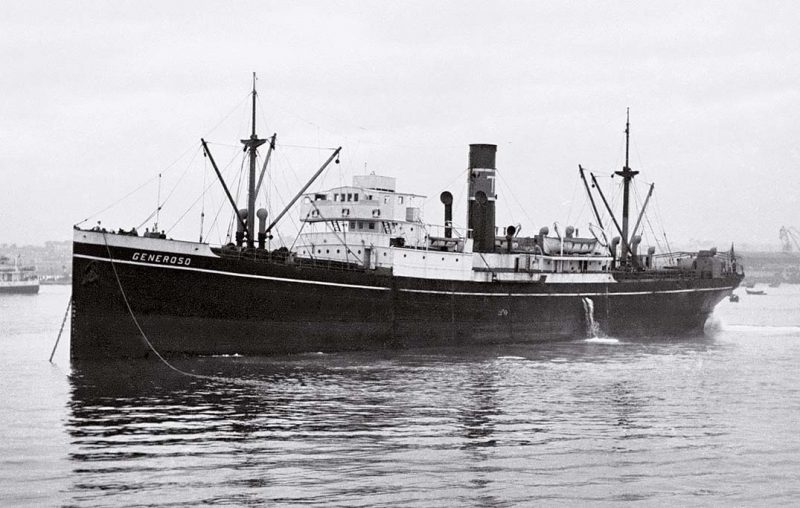
So, in 1949, together with Swiss partners, Sebastiano Tuillier established at Chur, in the east of Switzerland, a new company named San Giorgio S.A. di Navigazione to operate two steamers given the names GENEROSO, built at Port Glasgow in 1913 as LINMERE for Watson S.S. of Manchester, and SAN SALVATORE (named after mountains near Lugano – Monte Generoso & San Salvatore). The ships were both registered at Basle but managed from Lugano, in the Italian speaking southern part of Switzerland. The ships’ crews were normally drawn from Italy or Spain, but later also from Yugoslavia.
Unfortunately, despite representations by the Swiss Government, Italy continued to deny Swiss flagged ships access to their coastal trade, the GENEROSO was transferred in 1952 to an Italian partner, Gabbiano srl., although continuing to be managed by Sebastiano Tuillier until 1955. She was sold for breaking in 1961 and finally berthed at La Spezia in March 1963 for that purpose.
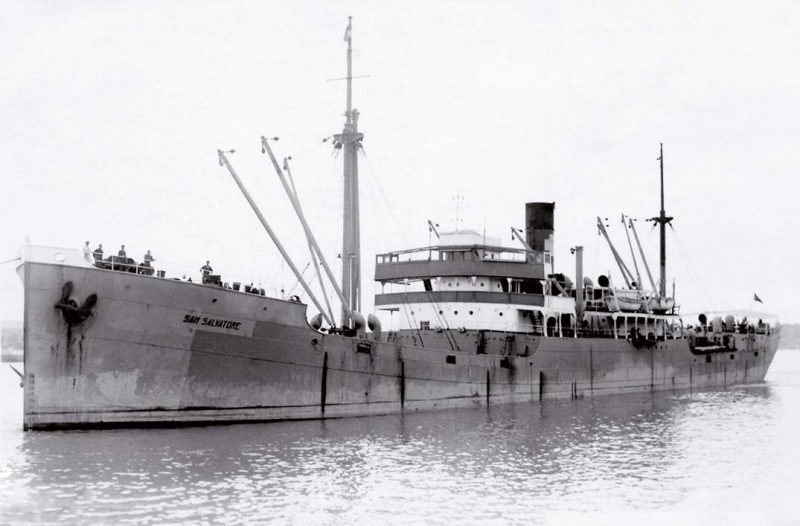
The 1919 U.S. built standard type ship SAN SALVATORE was sold for demolition at Preston in 1953 and San Giorgio S.A. di Navigazione was closed. Sebastiano Tuillier however remained in Lugano to operate his own ships, on occasions sailing as master, and prior to 1955 becoming a Doctor in Maritime Science.
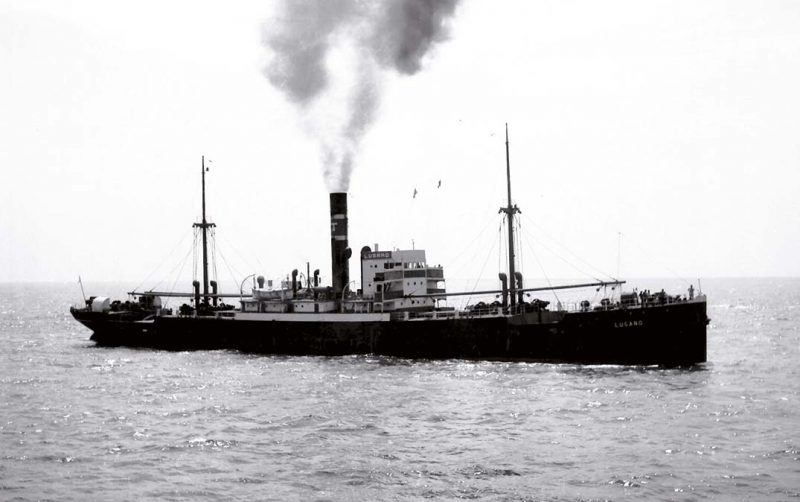
Somewhat logically, the first ship to be operated from Lugano on his own account was named LUGANO. This ship, built at Port Glasgow in 1905 as GENERALCONSUL PALLISEN for A/S Dansk Russiske D/S, from 1920 operated by DFDS who renamed her KENTUCKY in 1923, was purchased by Tuillier in 1953 and placed under the Costa Rica flag, registered at Puerto Limon.
This ship, which survived until sold for breaking near Split in August 1964, was followed in 1954/56 by no fewer than eight more ships as follows:-

1 – LOCARNO, built in 1929 by R.Thompson at Southwick, Sunderland, as DUNSLEY. She ran aground at Rapallo on 3rd January 1961 during a ballast voyage from Genoa to Portiglione but was soon refloated and towed to nearby La Spezia for breaking, arriving on 15th February.
2 – UJE, built in the U.S.A. as OCEAN FAITH in 1942 and managed by Headlam, then operated between 1949 and 1955 as AVISVALE by the Purvis Shipping Company – broken up at La Spezia late in 1962.
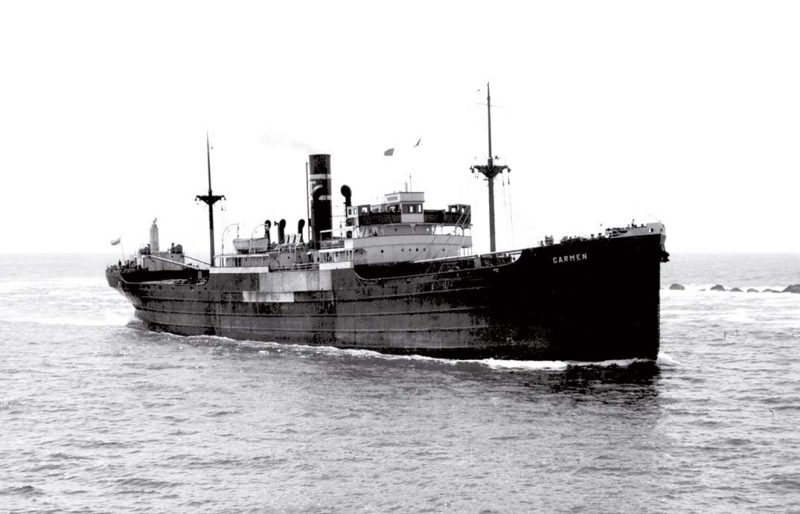
3 – CARMEN, built in 1930 by Wm. Doxford as IRON CHIEF for Australian owners. Having survived the War years as Ropner’s STAGPOOL, then trading for Tsavlaris as GRANNY SUZANNE between 1950 and 1954, the CARMEN sadly came to grief in the Dover Straits on the foggy morning of 13th June 1963, sinking with the loss of two of her crew. Bound for Burntisland with a cargo of bauxite from Takoradi, CARMEN was struck by the Turkish steamship SADIKZADE. The Turkish ship then struck the Greek cargo ship LEANDROS which, in seeking to avoid the collision, ran into the tanker CLYDE SERGEANT.

4 – AGUILA, built in 1928 by Lithgows at Port Glasgow as CLUNEPARK for Denholm, which had between 1948 and 1954 served Dundee, Perth & London Shipping as ANGUSMUIR – broken up near Split late in 1963.
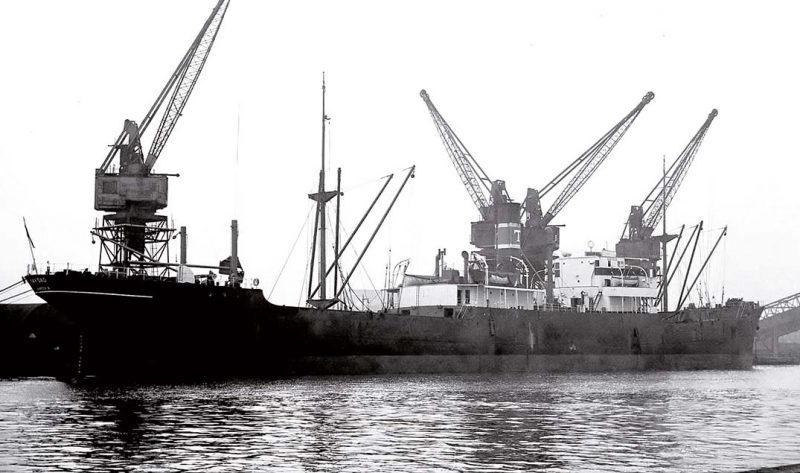
5 – NAVIDAD, built in 1925 by Workman, Clark at Belfast as ERRINGTON COURT for United British SS Co. Ltd., which had then served Greek owners between 1947 and 1954. NAVIDAD unfortunately stranded in the Frisian Islands on 14th December 1964 but was soon refloated and broken up in Holland.
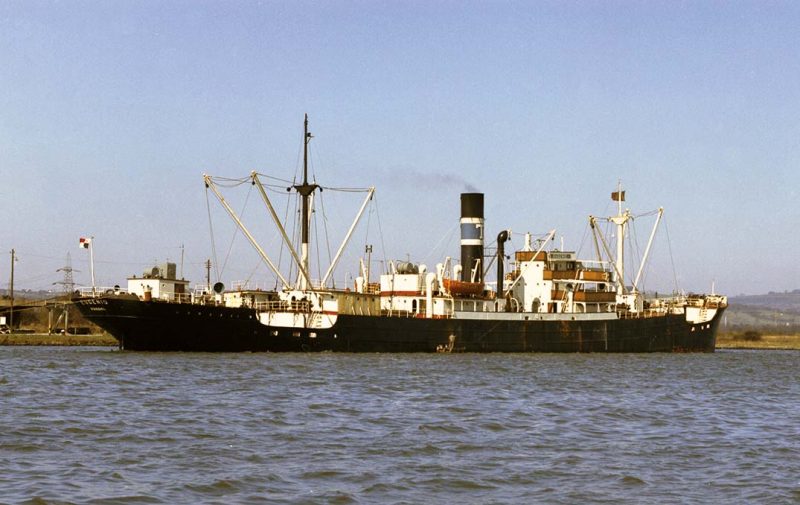
6 – SAN SALVADOR, built in 1930 by J.L.Thompson at North Sands, Sunderland, as RUNSWICK for Headlam, purchased in 1955 but renamed EUGENIO in 1959 – broken up at Bilbao in the second half of 1971.
7 – SORENGO, named after a community near Lugano. She had been built at Thornaby, Teesside, in 1910 as ROTHERHILL for W.J.Tillett & Co. of Cardiff but was German owned between 1925 and 1945. Requistioned by the Kriegsmarine in 1940, she had been seized by Britain at Flensburg in May 1945 and renamed Empire Wensum before being sold to other Cardiff owners in 1947 to trade as BRUCE M. until purchased by Tuillier in 1956 – broken up in Italy during the second half of 1966.

8 – CONDOR, built at Alblasserdam in 1919 as AMALIENBORG for A/S D/S Dannebrog of Copenhagen, which survived the War years as a German owned ship and, following five years under the Dutch flag, was returned to Denmark in 1952 as the SKERN before being purchased by Tuillier in 1956 – broken up it Italy in the second half of 1970.

Six of these ships were again registered in Costa Rica, the exceptions being NAVIDAD and CONDOR which, along with EUGENIO, were registered in Panama. NAVIDAD was nominally owned by Compañia de Navegación San Rocco S.A. and in 1957 the LUGANO, LOCARNO, SAN SALVADOR and CARMEN were transferred to that owning Company. The Costa Rica flagged ships were all transferred to Panama in 1959 while a “new” SAN SALVADOR acquired at that time was placed under the Liberian flag. This was the “Liberty Ship” SAMOS which had served Elder Dempster Lines from 1947 as ZINI and served Tuillier until October 1968 when sold to breakers at La Spezia, arriving from Naples on 26 October.
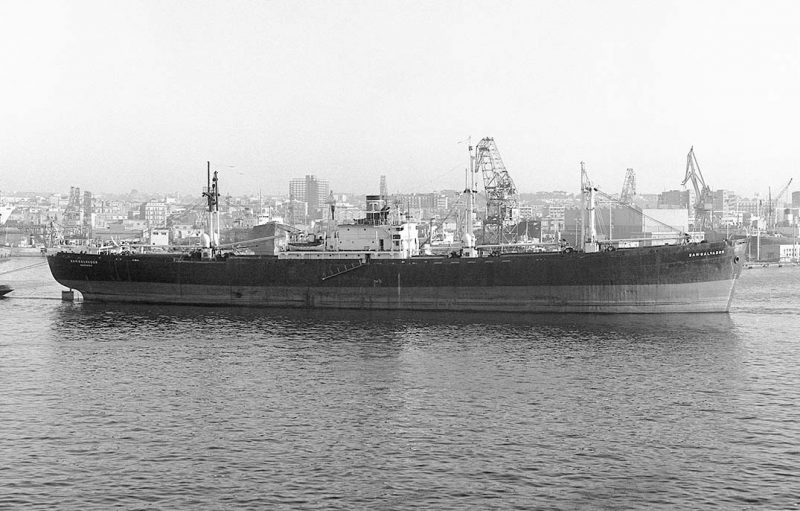
It is reported that these ships, time or voyage chartered to B.I.S.C. (Ore) Ltd., a subsidiary of the British Iron and Steel Federation, regularly called at Barrow between 1957 and 1961 transporting iron ore from Savona or North African ports for smelting in the Barrow, Millom and Askham Ironworks. Calls were also made at Newport, South Wales, from Toulon with bauxite, and more importantly at Burntisland on the northern shore of the Firth of Forth in Scotland where a factory had been built in 1906 to produce aluminium.
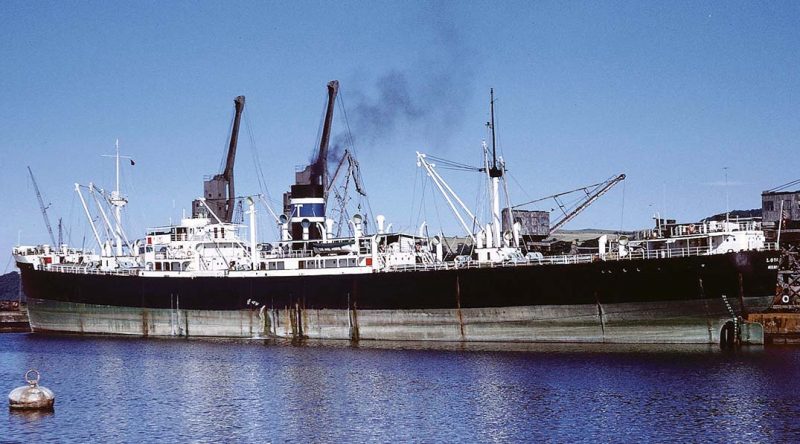
Colin Menzies had written that, until the end of the 1950s, regular shipments of bauxite were brought into Burntisland from Takoradi in Ghana in small tramp ships such as those operated by H.Hogarth and Stag Line. Then, as the size of tramp ships was increasing and there were fewer ships available which were small enough to enter the port, the British Aluminium Company decided to offer the entire contract for shipments of bauxite to both Burntisland and Newport to a single company which had sufficient ships of the right size and loaded draft. Thereby, in about 1960, Sebastiano Tuillier had secured an exclusive contract to ship bauxite to those ports. His first ship to call at Burntisland was the EUGENIO in April 1961 and his last ship the LOYALTY, arriving on 1st May 1973, sailing on the 18th May. The Burntisland contract was then awarded to a Norwegian consortium, headed by Klaveness, using self-unloading bulk carriers which unloaded their cargo into barges. The plant finally closed in 2002.
1960s Expansion
In order to expand capacity, in particular to serve the bauxite trade, the following larger ships were then acquired. They also frequently operated between Sherbro, Sierra Leone, and Rotterdam.

MARGA, a sistership to EUGENIO, built in 1930 as HARMATTAN for J.& C. Harrison, which had been sold to Germany in 1952 to trade as MARGA until purchased by Tuillier on 22nd August 1960. Unusually not renamed, she finally arrived at Sveti Kajo in November 1971 for breaking.
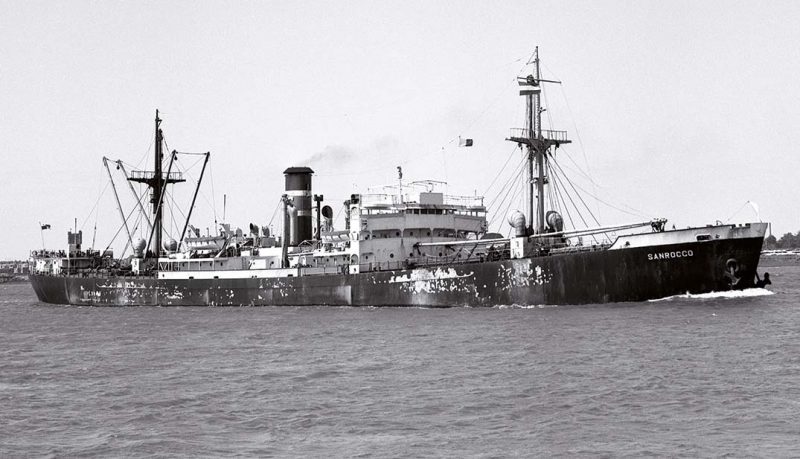
SANROCCO, a standard United States built “Ocean” type, built as OCEAN VETERAN in 1942, which had been operated for most of the War years by the Belgian Government, and from 1948 by Cie. Marirtime Belge as CAPITAINE LAUWEREINS, until purchased by Tuillier in 1961 – she finally arrived at La Spezia late in 1969 for breaking.
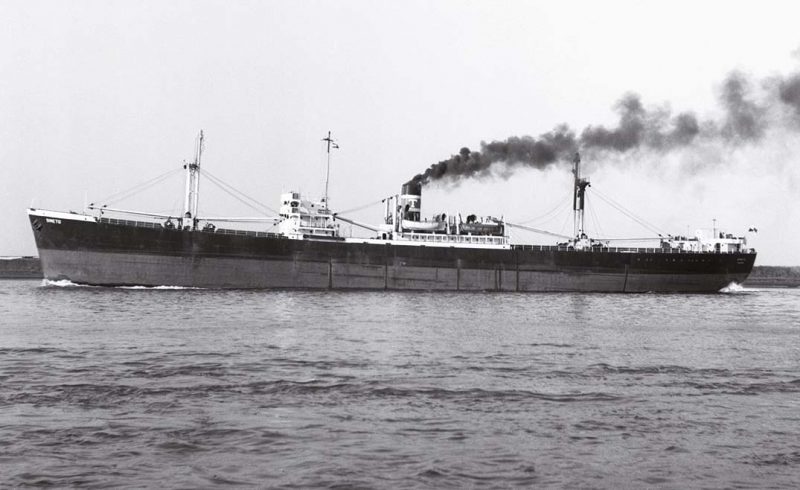
NATALE, SIMETO and SANTAGATA, Canadian built “Fort/Park” types which had served Elder Dempster Lines from 1946 as CHANDLER, CAMBRAY and COTTRELL respectively. Whereas NATALE was sold to breakers at La Spezia in 1969, her two sisterships survived until 1971.
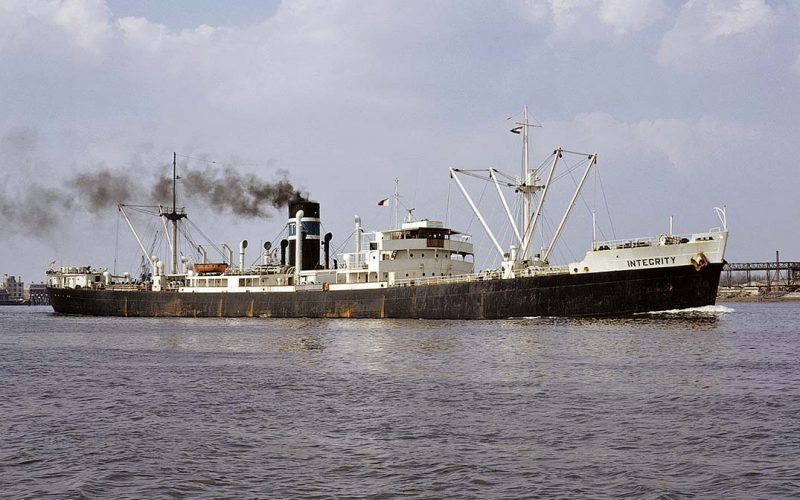
In 1962 the INTEGRITY and LOYALTY, sisterships built by Lithgows at Port Glasgow in 1947/8 as KATHA and KANBE for Henderson Line. Early in 1974, while LOYALTY sailed for Shanghai for breaking, the INTEGRITY commenced new employment lightening bulk carriers off Chittagong, from 1977 as UNITED CARRIER for Gulf Shipping, not being scrapped until 1978.
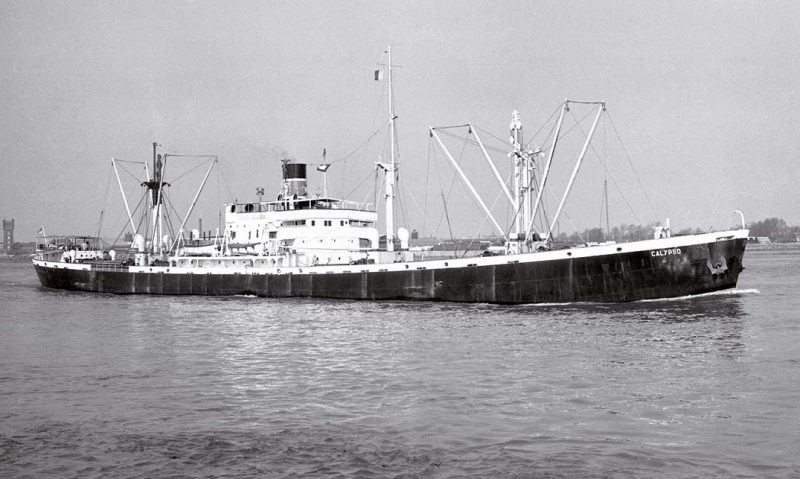
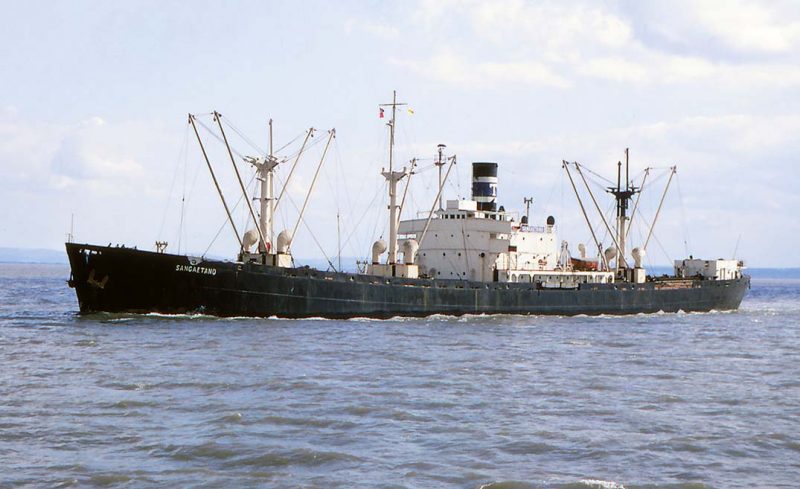
Also in 1962, two more Liberty Ships, named CALYPSO and SANGAETANO, were purchased. Formerly the SERBISTAN of Strick Line and LAKONIA of Donaldson Line, they were respectively broken up in 1969 and 1972, the latter at Blyth in Northumberland.

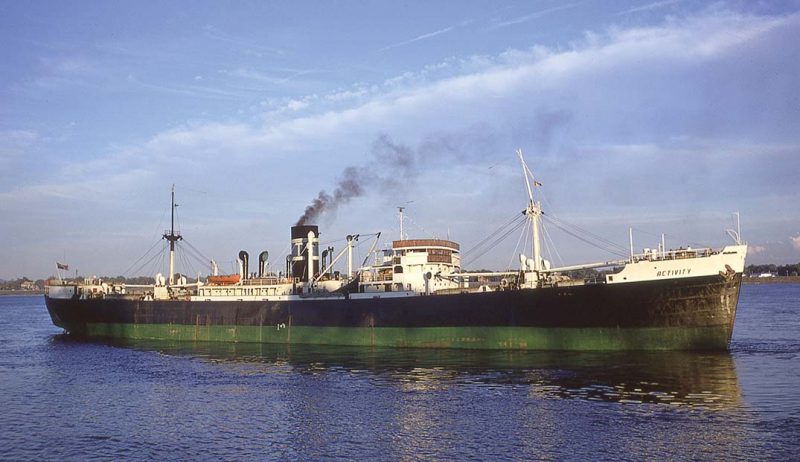
In 1963, the SINCERITY and ACTIVITY, sisterships built by Lithgows at Port Glasgow in 1947 and 1950 as KALEWA and KALADAN for Henderson Line. These were both broken up in 1977, SINCERITY arriving at Dalmuir on the Clyde in May while ACTIVITY was towed from Dubai to Pakistan’s Gadani Beach in July.
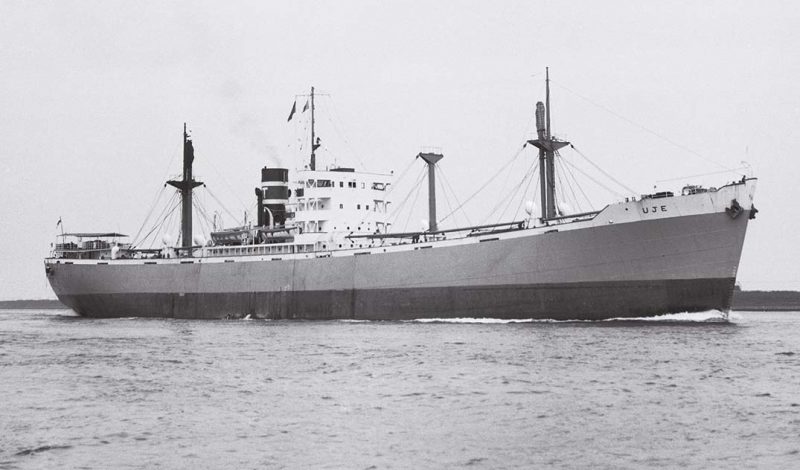
Strick Line’s 1944 Doxford built FLORISTAN, renamed UJE at Manchester on her purchase by Tuillier in October 1963, sadly suffered a fire at Antwerp on 22nd September 1973 and was soon towed to Bilbao for breaking.
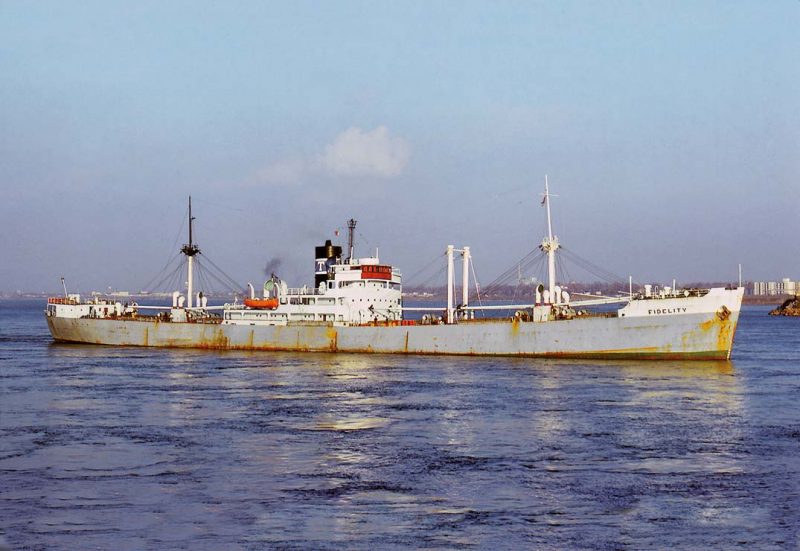
Henderson’s KINDAT, purchased by Tuillier at Liverpool late in 1963, as FIDELITY, finally arrived at Faslane on the Clyde in April 1977 for breaking, in her case direct from Apapa/Lagos after discharging a cargo of cement loaded at Split.
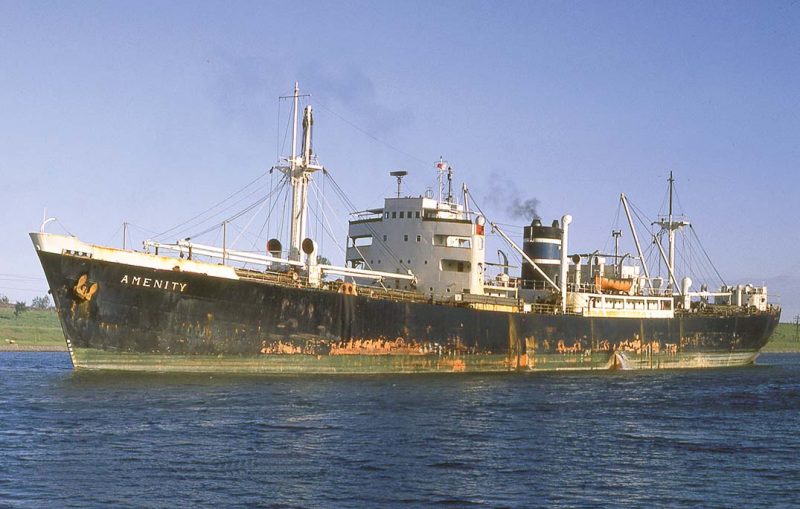
Turnbull Scott’s FLOWERGATE, purchased in 1964 and renamed AMENITY, is recorded to have loaded a cargo of bauxite at Toulon for Newport in August of that year. She finally arrived at Troon, in the South West of Scotland, on 9th May 1977 from Belfast for breaking.
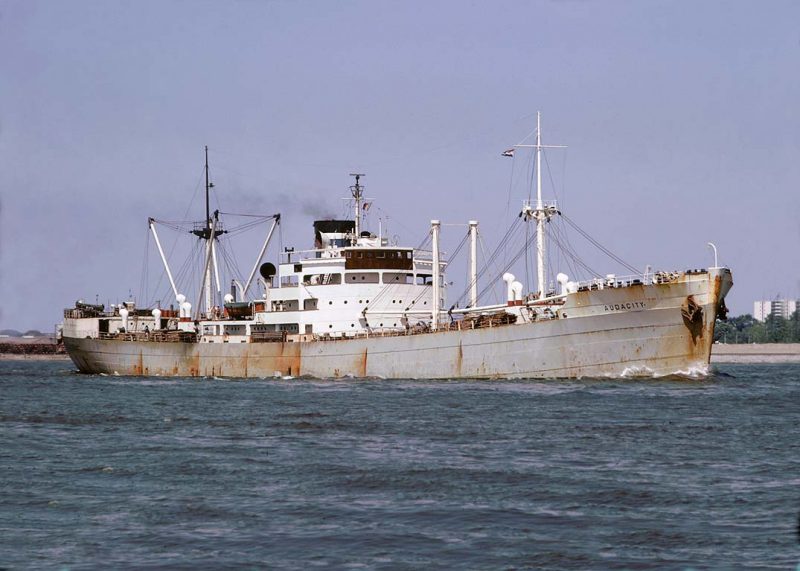
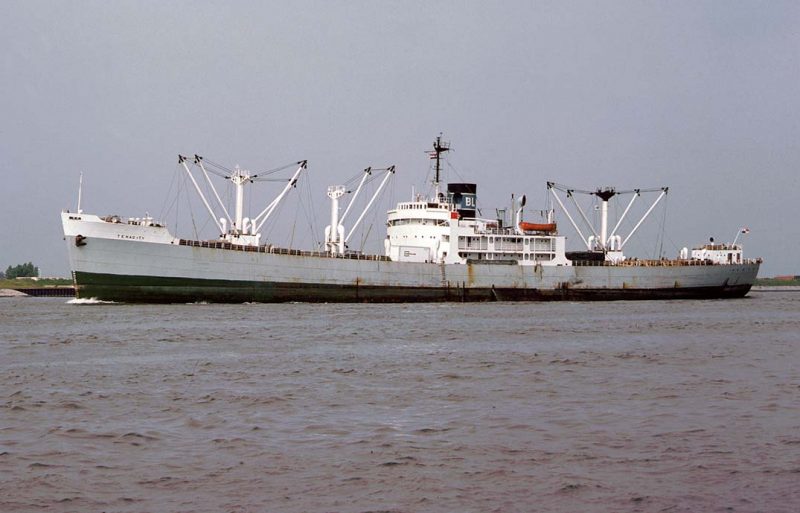
During 1966 three sisterships to KINDAT were purchased as follows: KOYAN (built 1953), renamed AUDACITY, KENTUNG (built 1954), renamed TENACITY and KOHIMA (built 1953), renamed FESTIVITY at Middlesbrough in October. These were followed in mid 1967 by the KANDAW (built 1955), renamed HONESTY. These ships were generally employed on cargo liner services between North Europe and the east coast of South America. The letters BL, presumably standing for Borromini Line, were briefly painted on the funnels of AUDACITY and TENACITY. At some point FESTIVITY and TENACITY were chartered out to Alianca of Brazil.
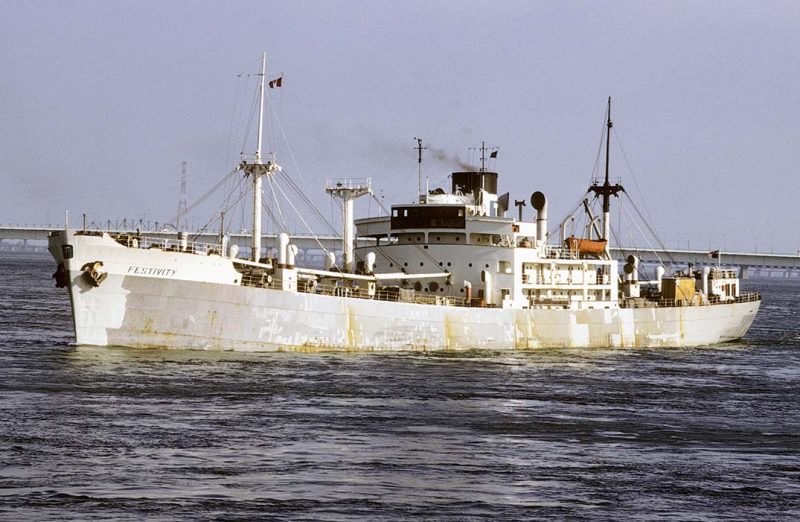
While most of these ships were sold for breaking at the end of 1977, the TENACITY was retained until transferred in August 1978 to the Greek flag and renamed BERENIX. Sold in November 1979, as MERCY FIVE, she finally arrived at Kaohsiung in May 1980 for breaking.
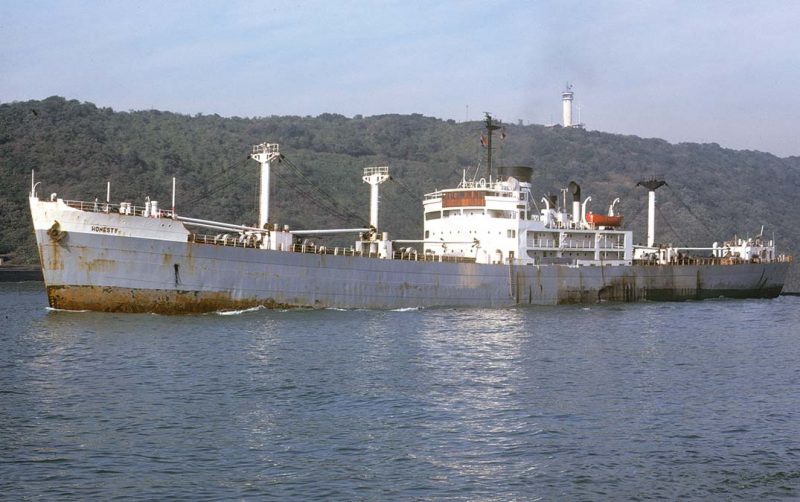
These were followed in mid 1967 by the KANDAW (built 1955), renamed HONESTY, which had oddly traded more widely including voyages between the Mediterranean and Persian Gulf via the Cape of Good Hope.
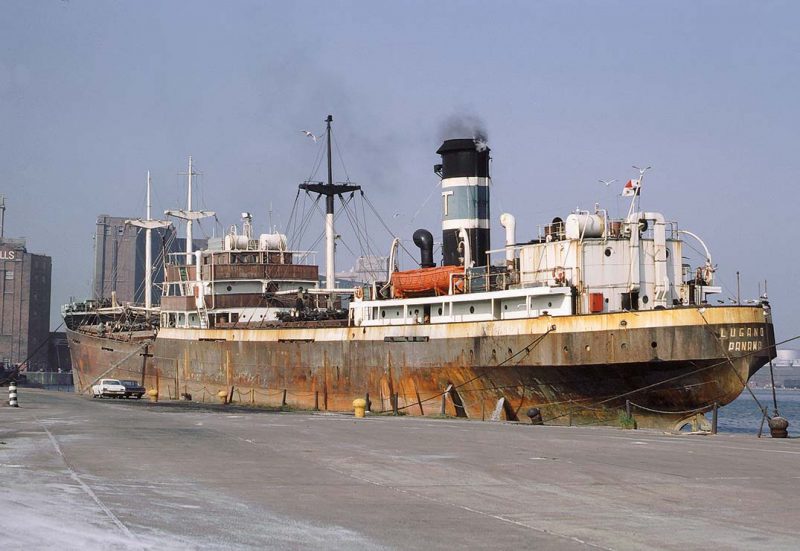
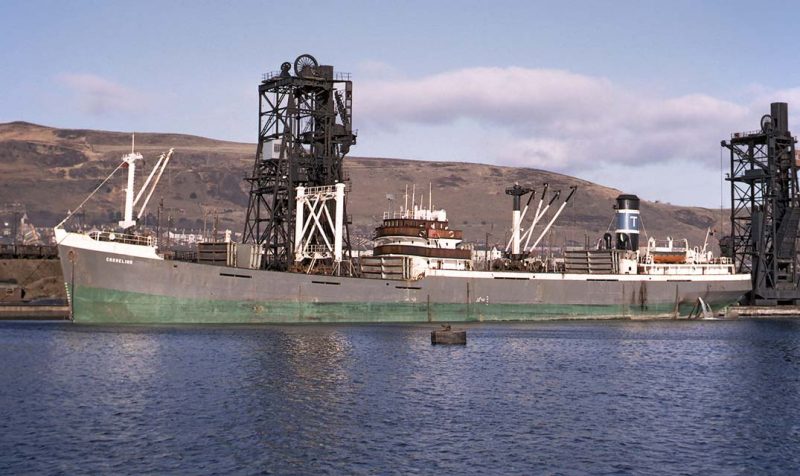
Also in 1967, two small Troon built colliers were purchased from Hudson S.S. Co. Ltd., the 1949 built HUDSON FIRTH becoming LUGANO and the 1946 built HUDSON STRAIT renamed CARMELINA. LUGANO’s final voyage was from Demerara to Birkenhead from where she sailed on 9th October 1972 bound for her breaker’s yard at Dalmuir. CARMELINA meanwhile continued trading until sold to Italian breakers in August 1975.

Tuillier’s ships were also frequent visitors to Canadian ports. The Montréal based ship photographer Harry Stott, when employed as a Marine Superintendent with B & K Shipping (Harry Broad), had met Sebastiano Tuillier when his employer was involved with cargo liner services to Canada during the late 1960s and early 1970s. He comments that Mr.Tuillier, who had visited Canada twice a year to review his operations, was at heart a tramp operator and found the liner business rather difficult.
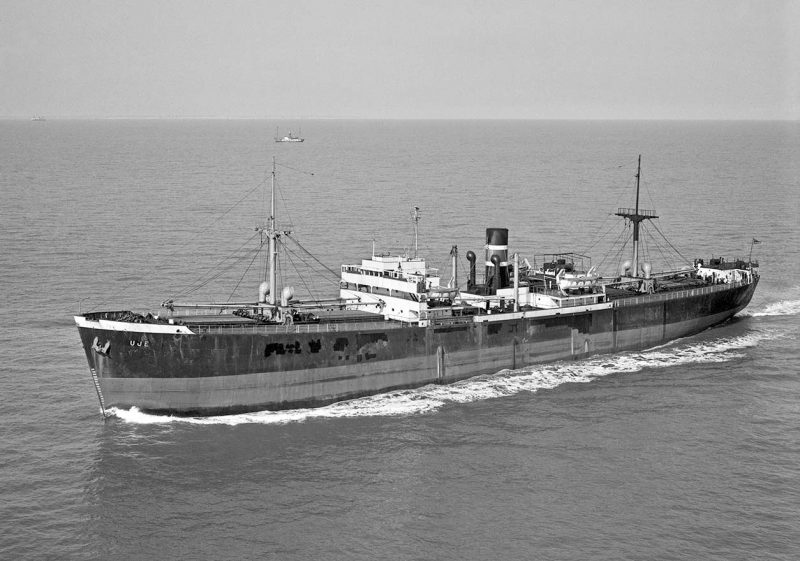
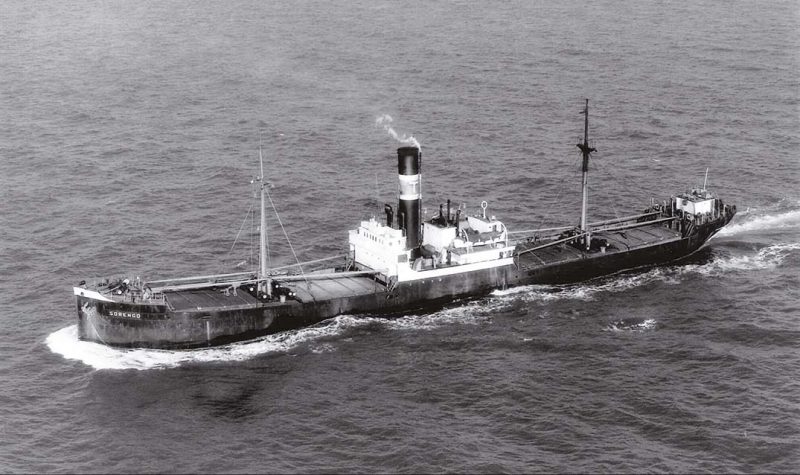

Comments
Sorry, comments are closed for this item